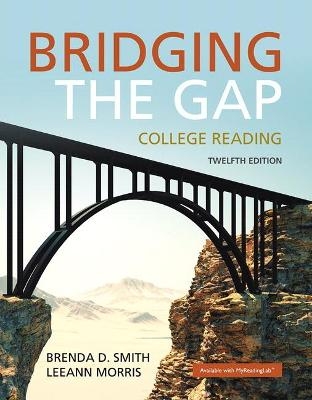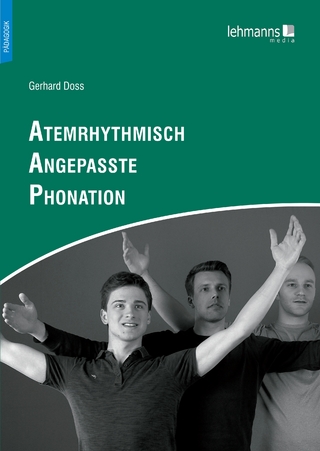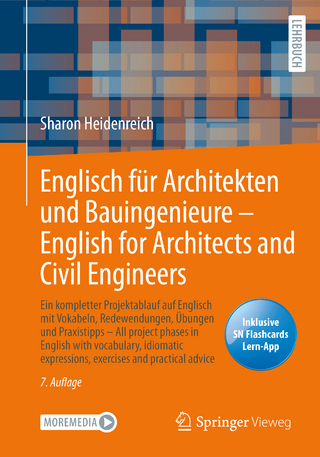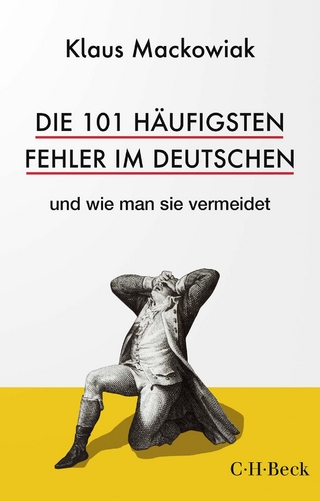
Bridging the Gap
Pearson (Verlag)
978-0-13-407276-0 (ISBN)
- Titel ist leider vergriffen;
keine Neuauflage - Artikel merken
Builds on the skills for college reading success Bridging the Gap encourages students to build on their previous reading experience to develop strategies for the demands of college reading. The authors help students create schemata through numerous academic readings and videos, and ultimately build new “bridges” with text-to-text, text-to-world, and text-to-self connections.
At the same time, fundamentals are strengthened through comprehensive skill instruction, critical-thinking activities, dependable exercises and examples, vocabulary development, and abundant high-interest readings. Each chapter introduces a new strategy, provides short exercises, and then offers practice through longer textbook selections. A new sequencing of topics begins with subjects that are critical to college reading success.
Also available with MyReadingLab™ MyReadingLab is an online homework, tutorial, and assessment program designed to work with this text to engage students and improve results. Within its structured environment, students practice what they learn, test their understanding, and pursue a personalized study plan that helps them develop their reading skills and promotes transference of those skills to college-level work. Full-length readings and assignments from the text are available in the etext version of MyReadingLab, strengthening the connection between the classroom and work done outside of class.
Note: You are purchasing a standalone product; MyReadingLab does not come packaged with this content. Students, if interested in purchasing this title with MyReadingLab, ask your instructor for the correct package ISBN and Course ID. Instructors, contact your Pearson representative for more information.
If you would like to purchase both the physical text and MyReadingLab, search for:
0134075196 / 9780134075198 Bridging the Gap Plus MyReadingLab with Pearson eText -- Access Card Package Package consists of:
0133995135 / 9780133995138 MyReadingLab with Pearson eText -- Glue in Access Card
0133995143 / 9780133995145MyReadingLab with Pearson eText -- Inside Star Sticker
0134072766 / 9780134072760 Bridging the Gap: College Reading
Dr. Brenda Smith, Professor Emerita of Georgia State University, is the author of Bridging the Gap: College Reading, Breaking Through: College Reading, and the Reader’s Handbook. Dr. Smith has authored other books on college reading and test-taking, and was the general editor of a series of study skills books for five different content areas. Dr. Smith taught Developmental Studies Reading at GSU and developed Freshman Orientation courses for the university. She was twice awarded “Outstanding Article of the Journal of Developmental Education.” Other awards include Distinguished Alumni Professor, Distinguished Georgia Educator, and Georgia Reading Teacher of the Year. Dr. Smith lives in Atlanta and serves on the Advisory Boards of the Shepherd Spinal Center and the Members Guild of the Atlanta History Center. Dr. LeeAnn Morris has more than 20 years of community college teaching experience and is committed to helping students achieve their college and career goals. She takes great satisfaction in continuing Brenda Smith’s legacy of excellence by shepherding Breaking Through: College Reading and Bridging the Gap: College Reading through their current editions. LeeAnn is a Distinguished Faculty professor at San Jacinto College near Houston, where she has been honored with the Outstanding Faculty Award. She served as chair of the College Preparatory Department and is delighted to return to the classroom full time to teach two levels of integrated reading and writing courses. LeeAnn is an avid reader and believer in the power and pleasure of lifelong reading. She has done extensive research on reading workshop approaches for college developmental reading students. She has witnessed the satisfaction and growth that come from reading often and widely and has incorporated the reading workshop concept into her teaching, along with Breaking Through and Bridging the Gap.
1. Active Academic Reading What Is Active Academic Reading? What Can We Learn From Cognitive Psychology and Neuroscience? BRAIN BOOSTER BRAIN BOOSTER: Are You Paying Attention? Help Your Brain Absorb New Information Poor Concentration: Causes and Cures External Distractions Internal Distractions BRAIN BOOSTER: Are You Curious? READER’S TIP: Improving Concentration READER’S TIP: Managing Electronic Communication Is Reading Rate Important? Varying Rate and Technique to Fit Purpose Rate Variations and Prior Knowledge READER’S TIP: Efficient Reading: Adjusting Rate and Technique to Material and Purpose What Is Your Baseline Reading Rate? BRAIN BOOSTER: Music to Our Ears and to Our Brains Habits for Faster Reading Strategies for Reading Comprehension Tests Plan for Success Before Taking a Test BRAIN BOOSTER: Balance Memorization and Application in Test Preparation During the Test After the Test BRAIN BOOSTER: Turn Mistakes Into Successes Recognize the Major Types of Comprehension Questions READER’S TIP: Key Words in Essay Questions Locus of Control SUMMARY POINTS SELECTION 1 PSYCHOLOGY “Are you Stalling? Win the Battle Against Procrastination!” from Samuel E. Wood, Ellen Green Wood, and Denise G. Boyd CONCEPT PREP FOR PSYCHOLOGY SELECTION 2 HISTORY “Home Front Workers, Rosie the Riveter, and Victory Girls” from Jacqueline Jones, et al. CONCEPT PREP FOR HISTORY SELECTION 3 SCIENCE “Is there Enough Earth for Everyone?” from Teresa Audesirk, Gerald Audesirk, and Bruce E. Byers VOCABULARY BOOSTER: OVER, UNDER, AROUND, AND THROUGH
2. Strategic Reading and Study What Is Strategic Reading? Four Types of Readers The Stages of Reading Stage 1: Strategies for Previewing Signposts for Previewing READER’S TIP: Ask Questions While Previewing Preview to Activate Schemata BRAIN BOOSTER: Schemata and Your Brain Stage 2: Strategies for Integrating Knowledge While Reading Integrating Ideas: How Do Good Readers Think? Metacognition READER’S TIP: Using Thinking Strategies While Reading READER’S TIP: Developing Metacognition for Reading Stage 3: Strategies for Recalling Recalling Through Writing The Three Steps of Recalling READER’S TIP: Thinking After Reading BRAIN BOOSTER: Use It to Remember It! SUMMARY POINTS SELECTION 1 HISTORY “Madam C. J. Walker: Business Savvy to Generous Philanthropy” from America.gov Archive SELECTION 2 HEALTH “High-Risk Drinking and College Students” from Rebecca J. Donatelle and Patricia Ketchum SELECTION 3 BUSINESS “Toms Shoes: ‘Be the Change You Want to See in the World’” from Gary Armstrong and Philip Kotler CONCEPT PREP FOR BUSINESS VOCABULARY BOOSTER: THE GOOD, THE BAD, AND THE UGLY
3. Organizing Textbook Information for Study Get Organized for College Study Building Knowledge Networks The Study Process Organizing Textbook Information BRAIN BOOSTER: Exercise to Boost Brain Power Annotating Why Annotate? READER’S TIP: How to Annotate When to Annotate Note Taking When and How to Take Notes The Cornell Method READER’S TIP: How to Take Notes: The Cornell Method Outlining READER’S TIP: Guidelines for Successful Outlining BRAIN BOOSTER: Sleep and Problem Solving Mapping READER’S TIP: How to Map SUMMARY POINTS SELECTION 1 BUSINESS COMMUNICATIONS “Watch Your Language!” from Gary Armstrong and Philip Kotler CONCEPT PREP FOR COMMUNICATIONS AND LANGUAGE SELECTION 2 HEALTH “Managing Stress in College” from Rebecca J. Donatelle CONCEPT PREP FOR HEALTH SELECTION 3 CRIMINAL JUSTICE “Police DNA Collection Sparks Questions” from the Associated Press VOCABULARY BOOSTER: WHO’S WHO IN MEDICINE?
4. Vocabulary Remembering New Words and Unlocking Meaning Associate Words in Phrases Associate Words with Rhymes or Sounds BRAIN BOOSTER: Use Your Senses to Make More Sense! Associate Words With Images Seek Reinforcement Create Concept Cards Use Strategies to Unlock Meaning While Reading Using Context Clues Definition or Synonym Elaborating Details Examples Comparison Contrast Antonyms Limitations of Context Clues Multiple Meanings of a Word Understanding the Structure of Words Using Word Reference Aids Using a Dictionary Using a Glossary Using a Thesaurus BRAIN BOOSTER: Meaning Matters! Deepening Word Meaning Exploring Word Origins Solving Analogies READER’S TIP: Categories of Analogy Relationships Studying Easily Confused Words SUMMARY POINTS SELECTION 1 HEALTH “Technology and Health” from Rebecca J. Donatelle VOCABULARY BOOSTER: WHAT’S IN, WHAT’S OUT? WHAT’S HOT, WHAT’S NOT?
5. Main Idea and Supporting Details Topics, Main Ideas, and Supporting Details What Is a Topic? What Is a Main Idea? What Are Supporting Details? Distinguishing Topics, Main Ideas, and Details: A Closer Look Strategies for Finding the Main Idea Prior Knowledge and Constructing the Main Idea Identifying Main Ideas Among Sentences READER’S TIP: Using Three Questions to Find the Main Idea Questioning for the Main Idea Stated Main Ideas The Topic Sentence How Common Are Stated Main Ideas? Where Are Stated Main Ideas Located? What Are Major and Minor Details? READER’S TIP: Signals for Significance Unstated Main Ideas Unstated Main Ideas in Sentences Unstated Main Ideas in Paragraphs Determining the Main Idea of Longer Selections READER’S TIP: Getting the Main Idea of Longer Selections BRAIN BOOSTER: Brains Need the Right Amount of Sleep Summary Writing: A Main Idea Skill Why Summarize? READER’S TIP: How to Summarize BRAIN BOOSTER: Chronic Stress and the Brain SUMMARY POINTS SELECTION 1 PSYCHOLOGY “The Obedience Study” from Carole Wade, Carol Tavris, and Maryanne Garry CONCEPT PREP FOR PSYCHOLOGY SELECTION 2 SHORT STORY “On the Sidewalk, Bleeding” from Evan Hunter CONCEPT PREP FOR LITERATURE SELECTION 3 CRIMINAL JUSTICE “Fighting Violent Gang Crime with Math” from Stuart Wolpert VOCABULARY BOOSTER: THE SUN, THE MOON, AND THE STARS
6. Patterns of Organization Textbook Organization: The Big Picture What Do Transitional Words Do? Words That Signal Addition
Words That Signal Examples or Illustrations
Words That Signal Time or Sequence
Words That Signal Comparison
Words That Signal Contrast
READER’S TIP: Transitions and Their Functions Words That Signal Cause and Effect Patterns of Organization in Textbooks BRAIN BOOSTER: Brains Like Patterns Simple Listing Definition Description Time Order, Sequence, or Narration Comparison Contrast Comparison and Contrast Cause and Effect Classification Summary Location or Spatial Order Generalization and Example READER’S TIP: Patterns of Organization and Signal Words Clues to the Organizational Pattern BRAIN BOOSTER: Watering the Brain Mixed Organizational Patterns SUMMARY POINTS SELECTION 1 COMMUNICATIONS “Managing Conflict” from Joseph A. DeVito SELECTION 2 HISTORY “Barbara Johns Leads a Student Strike” from Clayborne Carson, et al. CONCEPT PREP FOR ART HISTORY SELECTION 3 BUSINESS “Why is Papa John’s Rolling in the Dough?” from Courtland L. Bovée, John V. Thrill, and Barbara E. Schatzman VOCABULARY BOOSTER: CAN I GET THAT IN WRITING?
7. Inference What Is an Inference? What Is Required to Make a Reasonable Inference? Implied Meaning in Humor BRAIN BOOSTER: The Brain’s Pleasure Center and Learning Connotative Language Euphemisms and Politically Correct Language Figurative Language Idioms Similes Metaphors Hyperbole Personification Verbal Irony Figurative Language in Poetry Clues to Making Logical Inferences Inferences Based on Facts Inferences Based on the Voice of a Speaker or Narrator Inferences Based on Action and Description Inferences Based on Prior Knowledge BRAIN BOOSTER: Boost Brain Power Through Collaboration Expanding Prior Knowledge READER’S TIP: Making Inferences Drawing Conclusions SUMMARY POINTS SELECTION 1 SHORT STORY “A Dip in the Poole” from Bill Pronzini CONCEPT PREP FOR PHILOSOPHY AND LITERATURE SELECTION 2 PHILOSOPHY “Coyote” from Robert S. Ellwood SELECTION 3 PERSONAL NARRATIVE “Fear the College Years” from John Corcoran CONCEPT PREP FOR POLITICAL SCIENCE VOCABULARY BOOSTER: SAY, WHAT?
8. Point of View What Is the Author’s Point of View? Textbooks and the Author’s Point of View What Is Bias? READER’S TIP: Questions to Uncover Bias The Importance of the Reader’s Point of View BRAIN BOOSTER: Male and Female Brains and Their Points of View What Are Facts and Opinions? What Is the Author’s Purpose? What Is the Author’s Tone? READER’S TIP: Recognizing an Author’s Tone Using Tone and Other Clues to Determine the Point of View in Editorial Cartoons
SUMMARY POINTS SELECTION 1 PHILOSOPHY “Decision” from Gary R. Kirby and Jeffery R. Goodpaster SELECTION 2 SCIENCE “Earth’s Changing Climate” from Teresa Audesirk, Gerald Audesirk, and Bruce E. Byers SELECTION 3 PSYCHOLOGY “Mental Disorder and Personal Responsibility” from Carole Wade, Carol Tavris, and Maryanne Garry VOCABULARY BOOSTER: LIGHTS, CAMERA, ACTION!
9. Graphic Illustrations What Graphics Do READER’S TIP: How to Read Graphic Illustrations Types of Graphic Illustrations Diagrams Tables Maps Pie Graphs Bar Graphs Cumulative Bar Graphs Line Graphs Flowcharts SUMMARY POINTS SELECTION 1 PERSONAL NARRATIVE “Little Income, Big Debt: Managing Money in College” from Trent Hamm SELECTION 2 SCIENCE “The Risks and Benefits of Weight Loss Plans” from Jane B. Reece et al. SELECTION 3 SOCIOLOGY “People, Technology, and the Environment” from John J. Macionis VOCABULARY BOOSTER: PLAY IT AGAIN, SAM
10. Critical Thinking What Is Thinking? What Is Analytical Thinking? What Is Critical Thinking? Critical Thinking Skills and College Goals READER’S TIP: Four Habits of Effective Critical Thinkers Barriers to Critical Thinking Recognizing an Argument Steps in Analyzing and Evaluating an Argument Step 1: Identify the Position on the Issue Step 2: Identify the Support in the Argument READER’S TIP: Types of Support for Arguments Step 3: Evaluate the Support Step 4: Evaluate the Argument Inductive and Deductive Reasoning Applying the Four Steps of Critical Thinking Explanation of the Four Steps Creative and Critical Thinking BRAIN BOOSTER: The Creative Brain SUMMARY POINTS Themed Readings Technology, Crime, and Ethics SELECTION 1 CRIMINAL JUSTICE “High Technology and Criminal Opportunity” from Frank J. Schmalleger SELECTION 2 CRIMINAL JUSTICE “Fighting Crime with Technology” from Frank J. Schmalleger SELECTION 3 ESSAY “The Writer and the Troll” from Lindy West VOCABULARY BOOSTER: FOREIGN TERMS Glossary Credits Index Progress Chart for Reading Selections
| Erscheinungsdatum | 26.01.2016 |
|---|---|
| Sprache | englisch |
| Maße | 201 x 251 mm |
| Gewicht | 925 g |
| Themenwelt | Schulbuch / Wörterbuch ► Erwachsenenbildung |
| Geisteswissenschaften ► Sprach- / Literaturwissenschaft ► Sprachwissenschaft | |
| ISBN-10 | 0-13-407276-6 / 0134072766 |
| ISBN-13 | 978-0-13-407276-0 / 9780134072760 |
| Zustand | Neuware |
| Haben Sie eine Frage zum Produkt? |
aus dem Bereich


